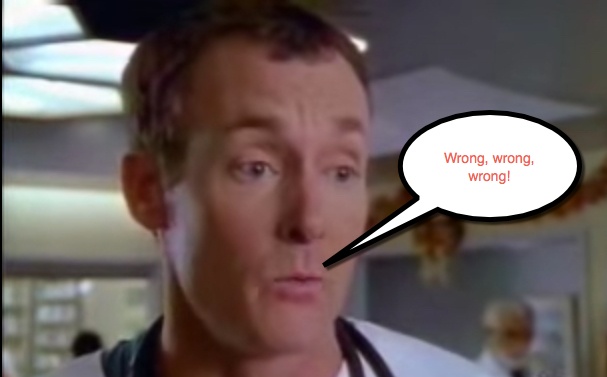- February 3, 2016
- Posted by: Dave Kurlan
- Category: Understanding the Sales Force

Recently, a number of readers asked me to review two articles which they thought were right up my alley. Apparently they thirst for one of my specialties – poking holes in articles that are just plain wrong about hiring salespeople. It’s not that I enjoy ripping articles apart, it’s just that I don’t have any tolerance for authors who either don’t know what they are talking about, don’t have any science backing them up, or use examples that can’t be replicated across industries, markets and geographies. Shall we dig in?
We’ll begin with an article from Sales Benchmark Index which in itself is a surprise because Greg Alexander and his team typically write great articles that are usually challenge-proof. If Dan Perry were more specific, and cited the particular assessments and tools to which his theory applied, then The Myth of the Ideal Hiring Profile would be fine as is. Instead, he used a broad brush leaving readers to believe that all assessments are outdated. Most personality and behavioral styles assessments were never designed to be used for sales selection, but not wanting to ignore an opportunity, these mostly old social instruments were adapted by using sales-like labels for their findings. But make no mistake; the findings are still the same age-old social findings that have no connection to business or sales and therefore, are not predictive of sales success. Clearly, these profiles are all useless and outdated for the specific role of sales selection. But not all assessments are outdated or adapted for sales.
That brings us to his other point; that the profile for an A player has changed dramatically in the past 12 months. I could agree with a statement that said sales has changed dramatically in the past 8 years, but really in the last 12 months? Here are 25 Ways it has changed… In sales, A players (the elite 6%) have only needed to add some social selling skills and use of tools to their repertoire. They already bring to the table the selling package required to succeed in sales in 2016 and beyond. They build relationships, follow a milestone-centric sales process, use a consultative approach, ask the tough questions, qualify thoroughly and get business and accounts closed. The group of salespeople that has changed the most are B players, who needed to close their skill and Sales DNA gaps. You can suggest that C’s have had the most changes to make, but the thing with C’s is that what they most need to change, they actually change the least. That’s why they are C’s!
Finally, if you want to use a sales assessment/selection tool that was designed for sales, is more accurate and predictive than any other assessment on the planet, is customizable for any modern sales role, and evolves as selling evolves, then you’ll want to become one of the 11,000 companies that rely on Objective Management Group’s (OMG) Sales Candidate Assessments.
Moving on to my favorite target, Harvard Business Review, I have to challenge Frank Cespedes again. I last challenged Frank and HBR in November of 2015 with the very popular article, How Wrong is the Harvard Business Article on How to Hire Salespeople. Their current collaboration, Hiring Star Salespeople Isn’t the Way to Grow, was a very interesting read. The article wasn’t really about hiring stars as much as it was about how to scale a SaaS business and I was in agreement with most of that. My issue – and it’s the same issue that I had with the November article – is that the authors insist that hiring salespeople should be based on their ability to complete the tasks they have identified.
Selling is not task-oriented as much as it is milestone-oriented and that’s when we are discussing sales process. The real magic in selling is when the sales process is integrated with the sales methodology – the consultative approach required for the conversation to flow seamlessly from stage to stage and milestone to milestone. While there are tasks involved during a sales cycle: following, calling, sending, showing, providing, sharing, explaining, etc., a salesperson’s ability to execute on those tasks is dependent upon their underlying selling skills and Sales DNA. Tasks are an oversimplification of the art and science required to be successful in selling. And whether you want to scale, grow at a moderate pace, or maintain your revenue, your salespeople – both new and veterans alike – must be able to execute consistently and effectively in their roles. How can you determine whether sales candidates have what it takes? Once again, I urge you to check out OMG’s Sales Candidate Assessments. How can you determine whether your existing salespeople can execute your plan and what is required to develop their capabilities? Check out the OMG Sales Force Evaluation.
